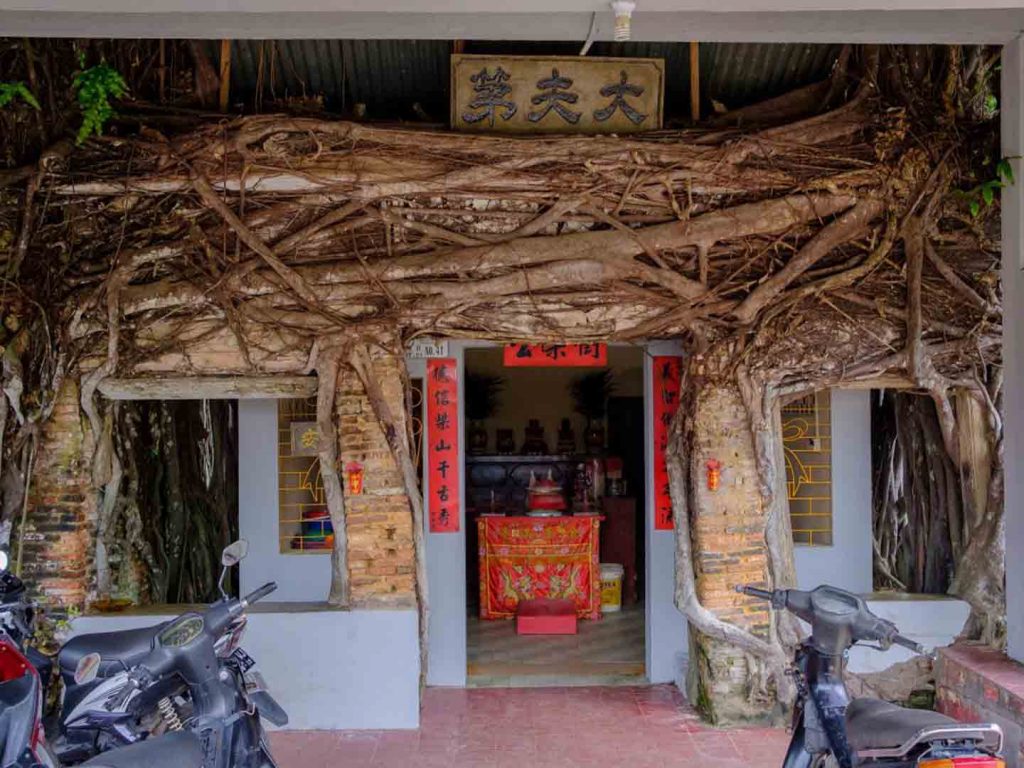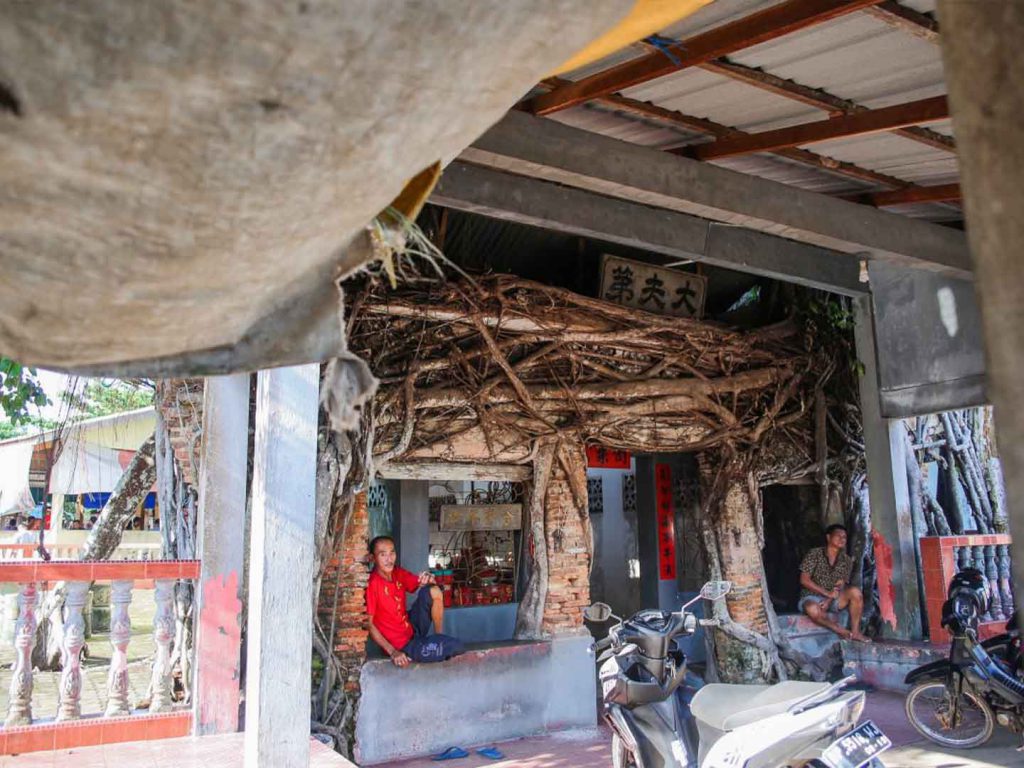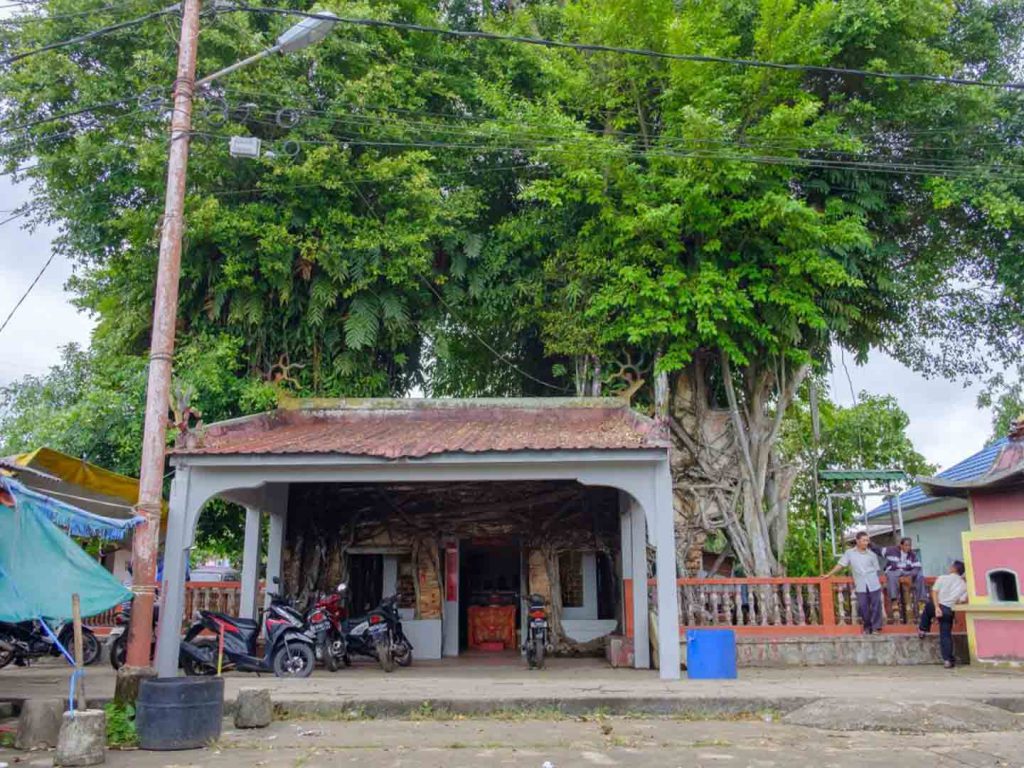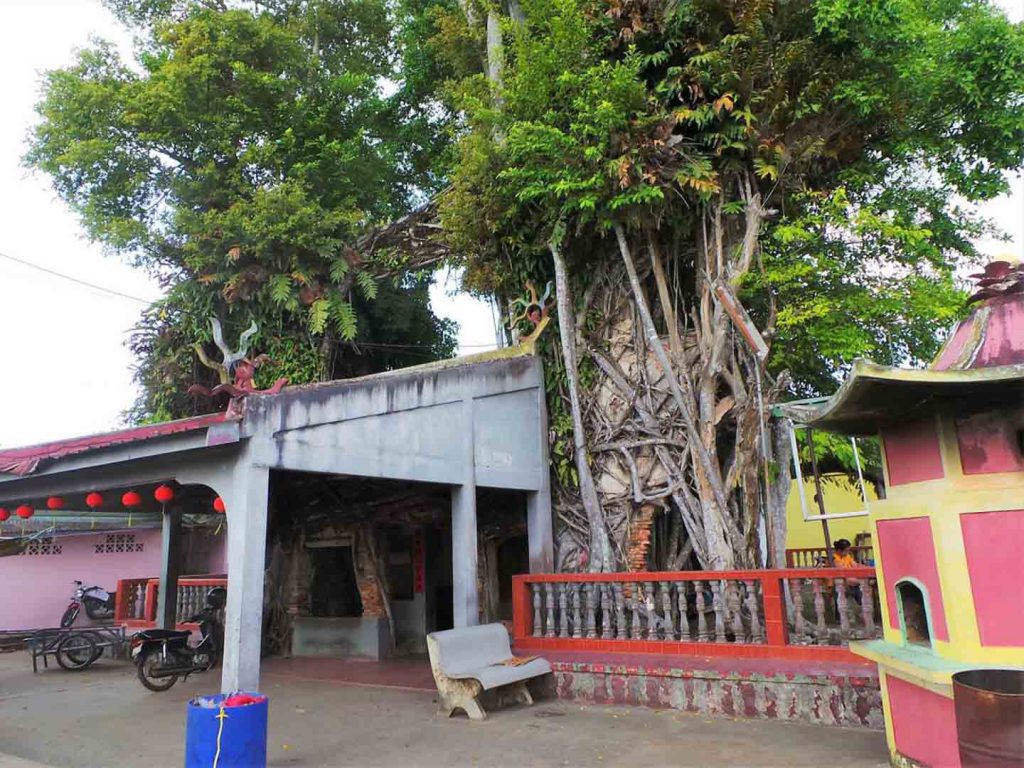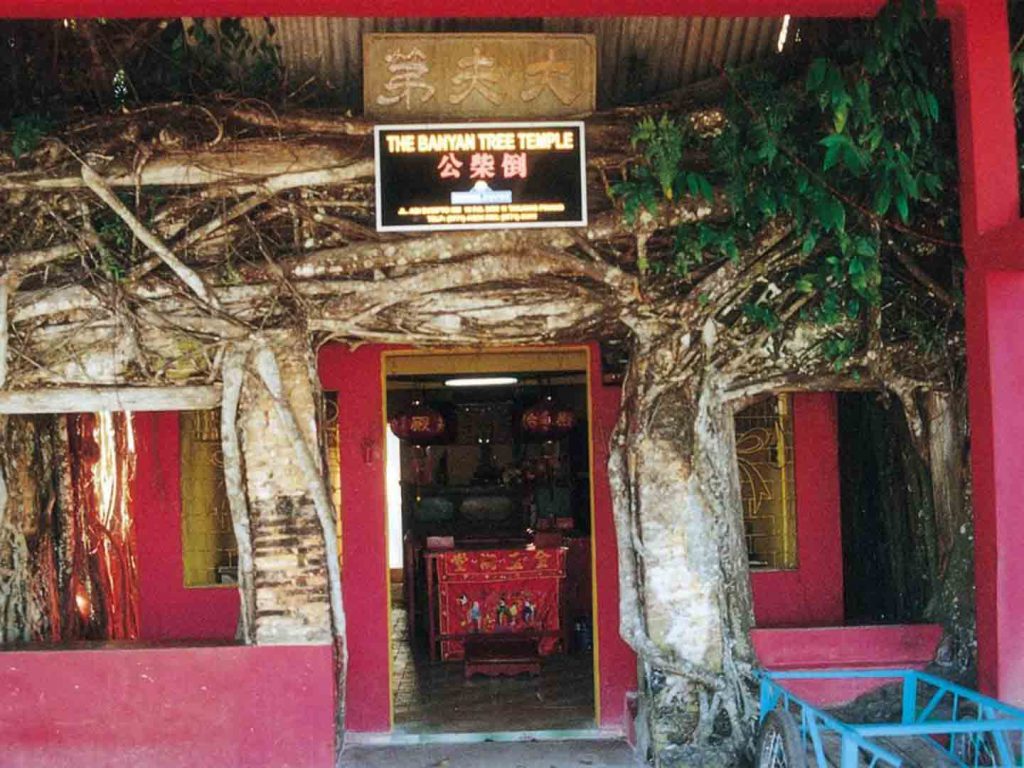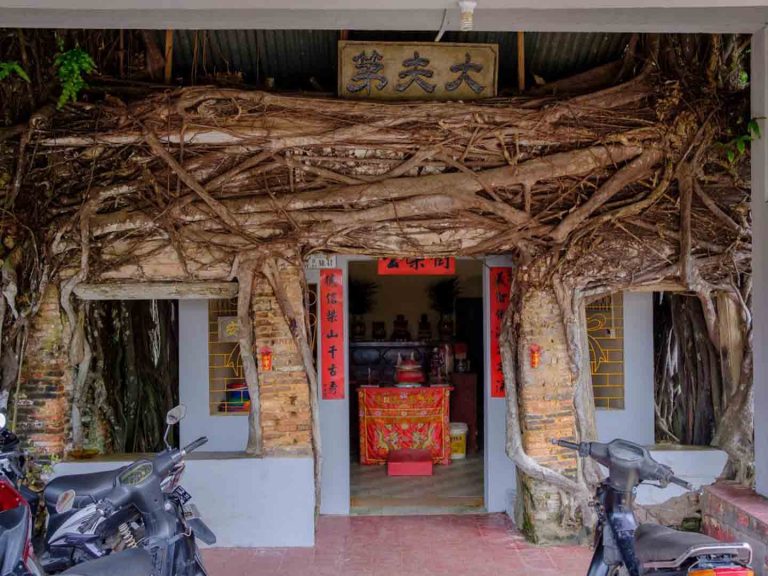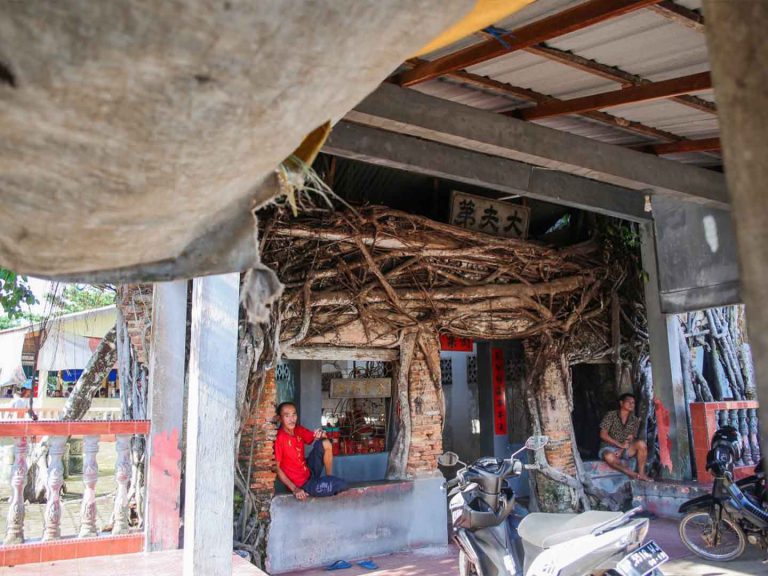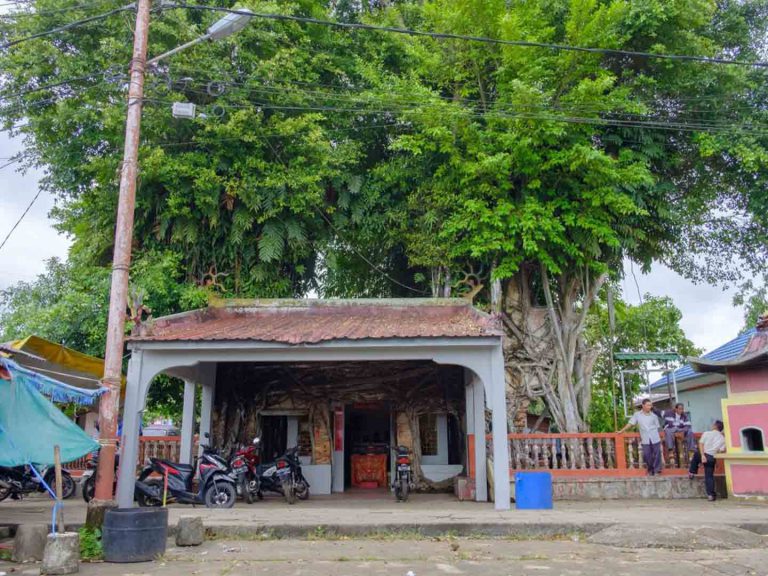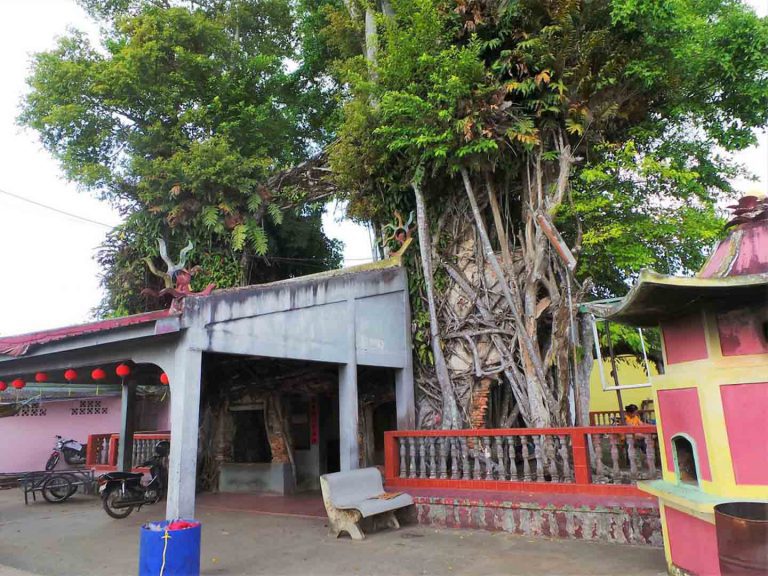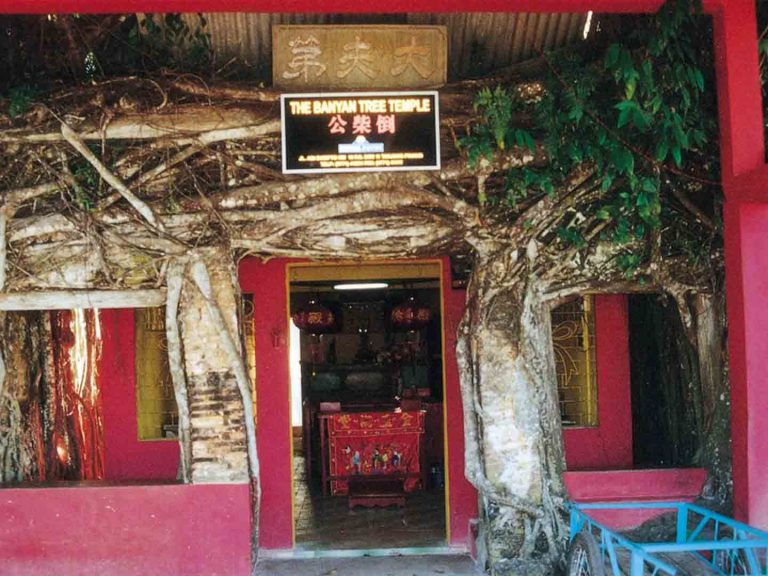Witness the power of Mother Nature at the Banyan Tree Temple of Senggarang Village where ancient trees entwine their roots around, enveloping the ancient walls of the building in protective embrace. The result is a fascinating and formidable structure that makes an ideal photography subject.
There are many stories concerning the origins of the site which was built in 1811. Its signboard reads “大夫第”, referring to residences of high-ranking government government officers called “Kapitan”. Some believe it was the home of deified Kapitan Cina Tan Nguang Ga (陈源教) who was the village head and a good Samaritan that helped the needy during his retirement.
According to the villagers, it was once a grand, two-storey structure. After the house was desolated, it dilapidated and would have long collapsed if not for the banyan trees’ support.
Surrounded by the remnants of the old walls, the altar sits in the newer concrete area built with funds donated from a Medan Chinese businessman who allegedly struck lucky after praying at the temple. The site now serves as a village shrine with the main deity being the Kapitan whose ancestral tablet is positioned in the centre. Flanking the sides are two unnamed community tablets for locals who have passed away without descendants, and for individuals who have contributed greatly to Senggarang Village.
During the seventh lunar month, descendents of the Kapitan still visit this ancestral home while other frequent visitors include those attracted by its divine efficacy.

